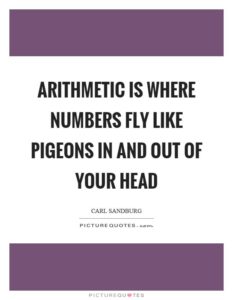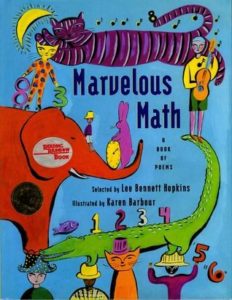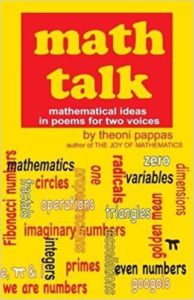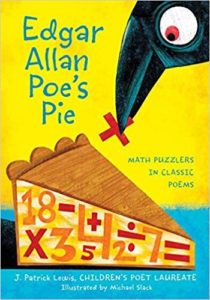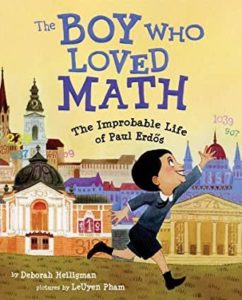 |
Deborah Heiligman’s The Boy Who Loved Math (Roaring Brook Press, 2013) is a delightful picture-book biography of Hungarian mathematician Paul Erdos who loved numbers from the time he was a toddler. (Tell him your birthday and he could tell you how many seconds you’d been alive.) For ages 4-8. |
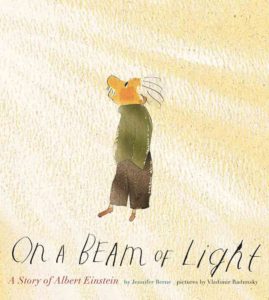 |
Jennifer Berne’s On a Beam of Light (Chronicle Books, 2013) is a picture-book biography of Albert Einstein, charmingly illustrated in pen-and-ink and watercolor. Kids learn about Einstein’s early fascination with a compass (“Suddenly he knew there were mysteries in the world…”) and how – one day while riding his bicycle – he wondered what it would be like to ride on a beam of light. Eventually he grew up to theorize about atoms, mass, and energy, and to devise his famous Theory of Relativity. For ages 6-9. |
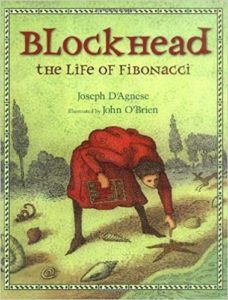 |
Joseph D’Agnese’s Blockhead (Henry Holt and Company, 2010) is a charmingly illustrated picture-book biography of Leonardo Fibonacci – the daydreaming medieval “blockhead” (and famous mathematician) whose astute observations of numbers in nature led to the discovery of the “Fibonacci series.” Pictures show Fibonacci happily counting pomegranate and sunflower seeds, flower petals, and seashell chambers; text includes a beautifully clear description of his signature number pattern. For ages 6-10. |
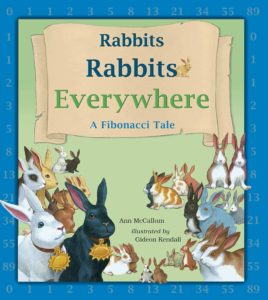 |
For more on the Fibonacci sequence for the same age group, see Sarah Campbell’s Growing Patterns (Boyds Mill Press, 2010), illustrated with gorgeous (and countable) color photographs; and Ann McCallum’s Rabbits, Rabbits Everywhere (Charlesbridge Publishing, 2007), a tale of a wizard, the Pied Piper, a lot of rabbits, and a clever little girl named Amanda. Also see Emily Gravett’s The Rabbit Problem (above). (And these Fibonacci rabbit lesson plans.) |
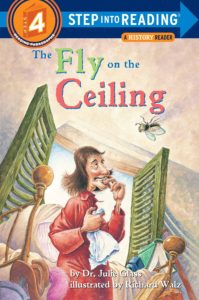 |
Julie Glass’s A Fly on the Ceiling (Random House, 1998) is a Step-Into-Reading book about French mathematician Rene Descartes and his discovery of the Cartesian system of coordinates. For ages 7-9. |
| |
Play Cartesian Battleship! |
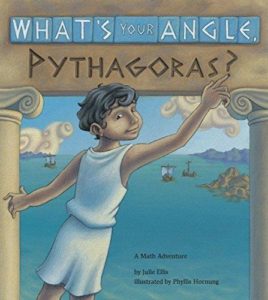 |
By Julie Ellis, What’s Your Angle, Pythagoras? (Charlesbridge, 2004) is a fictionalized picture-book account of the famous Greek mathematician. Here Pythagoras, a curious young boy, travels to Egypt with his father, learns about right triangles, and comes up with the Pythagorean theorem. For ages 7-10 |
| |
This YouTube video shows how to make a rope triangle of the sort used to solve problems in What’s Your Angle, Pythagoras? |
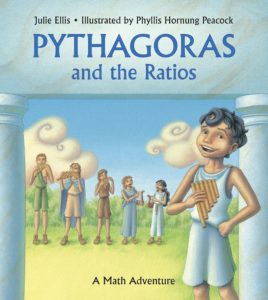 |
Also see the sequel, Pythagoras and the Ratios (Charlesbridge, 2010), in which Pythagoras and his cousins want to win a music contest, but their pipes and lyres sound awful. Pythagoras saves the day by elucidating the mathematical ratio that creates harmony. For ages 7-10. |
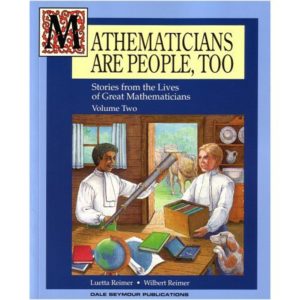 |
By Luetta Reimer and Wilbert Reimer, Mathematicians Are People Too! (Dale Seymour Publications, 1994) is a collection of short friendly biographical stories about fifteen famous mathematicians, among them Thales (“Pyramids, Olives, and Donkeys”), Archimedes (“The Man Who Concentrated Too Hard”), Blaise Pascal (“Count on Pascal”), Sophie Germain (“Mathematics at Midnight”), and Srinivasa Ramanujan (“Numbers Were His Greatest Treasure”). For ages 7-12. |
| |
Also see Mathematicians Are People Too! Volume 2 (Dale Seymour Publications, 1995) for another fifteen mathematicians, among them Euclid, Fibonacci, Descartes, Benjamin Banneker, Ada Lovelace, and Albert Einstein. |
